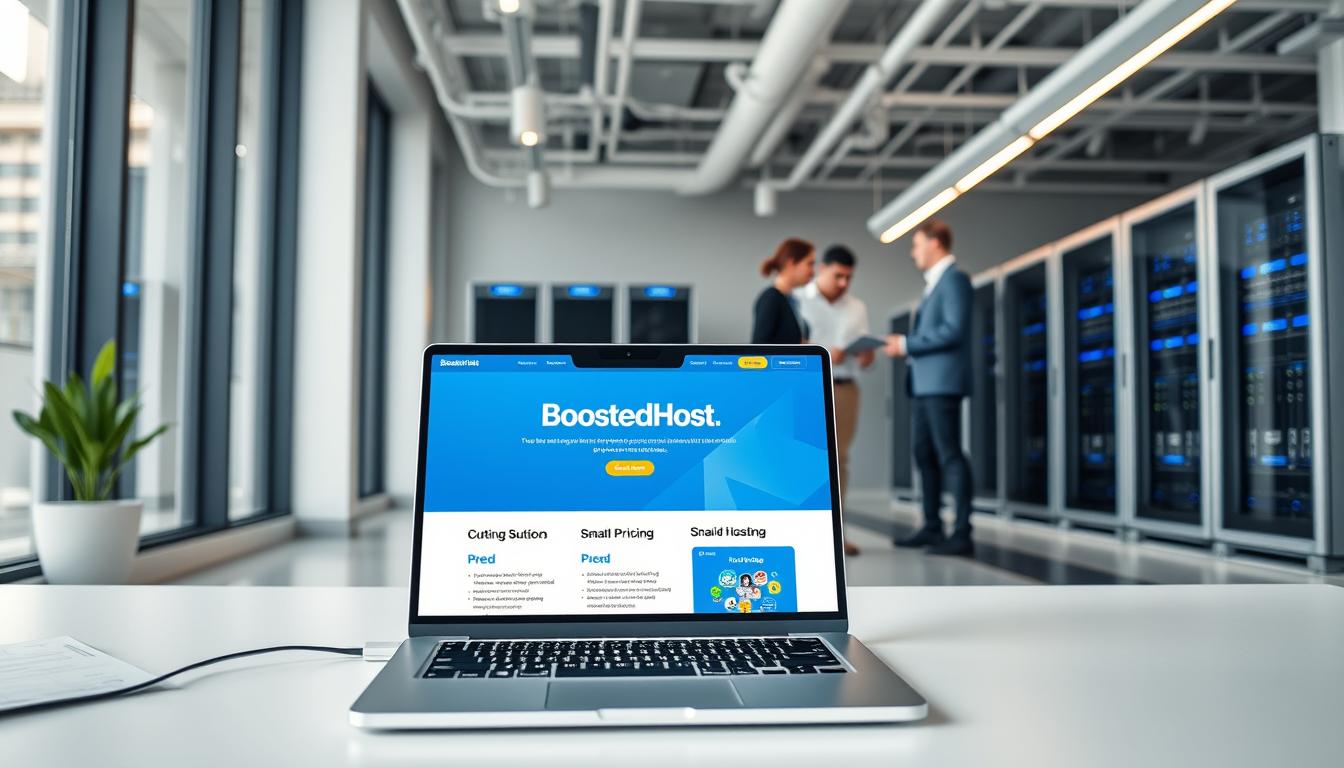We get it — choosing a host feels personal. Your site holds ideas, dollars, and hard work. A slow server or surprise fee can hit you where it matters.
We set a fair, data-driven stage. Our tests run real benchmarks: TTFB checks, WordPress Hosting Benchmark, and WPPerformanceTester. We test how servers, CDN, and caching shape page speed and Core Web Vitals.
In this review we compare two Swiss favorites head-to-head. We highlight speed, uptime, pricing transparency, and included features. We call out renewal traps and explain why LiteSpeed + QUIC, NVMe, and high-GHz CPUs matter for performance.
Expect clear results and plain-English takeaways. We’ll show where a managed wordpress hosting approach delivers business value — and when developer tools like SSH, staging, and Git matter. This is for site owners, agencies, and ecommerce teams who need measurable speed, uptime, and fast support.
Key Takeaways
- We test real-world metrics that drive page speed — TTFB and CDN setup are critical.
- LiteSpeed + QUIC and NVMe deliver noticeable admin and site performance gains.
- Transparent pricing and clear renewal terms reduce long-term cost surprises.
- Managed features — daily backups, malware protection, staging — define modern hosting value.
- We favor hosts with multi-region servers and responsive 24/7 support for business continuity.
At a glance: who this comparison is for and how to read it
If your project depends on speed and clear pricing, this comparison was written for you. We focus on real-world results that matter to site owners and teams.
Who benefits: individuals, SMBs, agencies, WooCommerce stores, and dev teams that need transparent pricing, fast support, and high performance. This includes marketers who track conversions and developers who need SSH, staging, and PHP control.
We run SpeedVitals across 40+ locations and repeat tests to warm caches. That gives global TTFB insights you can trust.
Keep email and domain services separate from your hosting to avoid migration headaches and resource strain. Uptime guarantees are useful — but check how each host defines planned maintenance and monitoring methods.
- Quick-skim start, deep dives later — jump to performance, features, or pricing.
- We translate metrics into business impact: lower TTFB boosts conversions, SEO, and checkout flow.
- We list baseline inclusions so you know the starting value for each plan.

How we test hosts in 2025: tools, metrics, and what really matters
We measure host performance with repeatable, real-world tests that mirror live traffic. Our goal is simple: deliver actionable results that map to business outcomes. We focus on metrics that move the needle for websites and ecommerce sites.

SpeedVitals and global TTFB across 40+ locations
We run SpeedVitals from 40+ locations. Tests repeat until CDN edges are warm. That gives reliable global TTFB and variance data.
Target: sub-200ms global TTFB for origin plus edge. That translates to faster pages and fewer lost conversions.
WordPress Hosting Benchmark and WPPerformanceTester
We use WordPress Hosting Benchmark and WPPerformanceTester to measure CPU, memory, database speed, and object cache impact. Tests run on identical site builds—same theme and plugins—to keep results fair.
Uptime monitoring and real-user signals
Uptime monitoring runs 24/7. We log planned maintenance vs unplanned events to verify true 99.99% uptime, not marketing claims.
We also tie TTFB to LCP—about 40% of LCP is TTFB-driven. Faster origin plus edge equals better Core Web Vitals and improved SEO.
- We measure TTFB, CDN hit rate, global variance, and stability under load.
- We retest after support actions to validate minutes-to-resolution.
- We document steps so teams can replicate tests before committing to a plan.
| Test | What it measures | Why it matters |
|---|---|---|
| SpeedVitals (40+ locations) | Global TTFB, edge routing | Shows real-world speed and CDN effectiveness |
| WordPress Hosting Benchmark | CPU, memory bandwidth | Reveals server capacity for dynamic sites |
| WPPerformanceTester | DB, object cache, PHP response | Shows bottlenecks that affect page and checkout speed |
BoostedHost vs cyon
We map plan tiers, buyer types, and core advantages to make the choice straightforward.
Positioning: One provider aims squarely at premium, performance-first hosting with Swiss engineering, clear pricing, and AI site tools. The other is a familiar Swiss brand that appeals to customers who value local presence and regional trust.
Plans and buyer profiles:
- Freelancers and small businesses — need fast setup, predictable pricing, and easy site builders.
- Ecommerce teams — demand low TTFB, staging, and WooCommerce-ready stacks.
- Agencies and developers — look for SSH, Git, staging, and clear resource limits for scaling to VPS or cloud.
Shared plans differ. Watch for SSH access, staging, free SSL, and explicit server limits. Renewal pricing and add-on bloat change total cost of ownership.
We recommend checking the provider’s transparency and growth paths. For a quick look at premium hosting plans, see premium hosting plans.
Performance and speed stack comparison
Performance depends on three things: server engine, CDN strategy, and real hardware. We focus on how those layers combine to lower TTFB and improve Core Web Vitals for your website.
LiteSpeed + QUIC advantages
LiteSpeed with QUIC gives event-driven handling and built-in caching that often beats Apache or plain Nginx in real WordPress scenarios. That translates to faster admin and page loads.
Sub-200ms global TTFB and CDN impact
Pairing LiteSpeed with a global CDN tuned for dynamic caching targets sub-200ms global TTFB. Proper CDN rules can push effective edge TTFB toward ~100ms from many regions.
Multi-runtime support
We require modern stacks to support PHP, Node.js, and Python so dynamic apps scale without bottlenecks. Updated PHP handlers and adequate PHP workers are vital for WooCommerce and API-heavy sites.
What true “managed” should include
Managed hosting must offer object caching, CDN rules, proactive PHP updates, staging, and tuning. Those items deliver real-world speed improvements, not just marketing copy.
- NVMe, high-GHz CPUs, and DDR5 cut execution time.
- Regular SpeedVitals checks validate TTFB gains and cache warmth.
- Developers keep control—SSH, Git, and staging—without extra complexity.
Uptime and reliability under real monitoring conditions
Reliable uptime is the backbone of any web project — numbers matter more than promises. We test uptime with continuous probes, not just internal logs. That gives a clear picture of how a host performs for real websites and businesses.
Why 99.99% uptime matters more than “guarantees”
99.99% uptime equals under 4.4 minutes of downtime per month. That small window still affects conversions, SEO, and ad spend during peak campaigns.
Guarantees often exclude planned maintenance and rely on internal records for credits. Independent monitoring shows the real impact and exposes gaps in SLA wording.
- We measure uptime continuously across probes and document incidents for transparent results.
- Redundancy at the network and storage layers reduces single points of failure.
- Proactive health checks spot rising error rates before they hit your site.
- Transparent status pages and root-cause updates are green flags when choosing a host.
- We recommend customers run third-party monitors for full accountability.
Our data-driven approach favours hosts that combine fast remediation with clear communication. Fast support and consistent uptime preserve business value, site performance, and customer trust.
Included features that move the needle
The right bundled features reduce risk and cut daily maintenance time for site owners. A solid hosting package should protect your website and restore it fast if something breaks. We focus on practical inclusions that save hours and dollars.
Free SSL, daily backups, and active malware protection
Every plan includes free SSL so pages load secure without add-on costs. Daily snapshots let us restore a site quickly after a bad plugin or update.
Proactive malware scans and clear cleanup procedures reduce downtime and avoid surprise cleanup fees. That lowers operational risk for your business.
Our CDN runs dynamic caching and smart routing to keep global TTFB low. We tune cache rules for WordPress and WooCommerce so carts and logged-in sessions aren’t improperly cached.
Paired with LiteSpeed caching, the CDN delivers static and dynamic wins — real speed you can measure without piling on plugins.
Email, domains, and separation for resilience
Keep email and domain registration separate from your host. That prevents inode bloat, simplifies migrations, and isolates account risk.
We recommend separate providers for domain and email so your site can move freely if you change hosting plans or need a different server setup.
“Free SSL, daily backups, and dynamic CDN rules are not marketing copy — they’re operational necessities that protect sites and preserve business value.”
- Confirm backup retention and cleanup policies before you commit.
- Ask support how CDN rules are tuned for e-commerce and authenticated pages.
Managed WordPress and WooCommerce readiness
A true managed WordPress plan fixes the gaps that slow real stores. We focus on the items that keep carts, checkouts, and account pages reliable during spikes.
Object caching, PHP workers, and checkout performance
Persistent object cache reduces repeated database calls. That lowers CPU and speeds dynamic pages like product lists and My Account.
We size PHP workers for burst traffic. More workers mean fewer queue delays at checkout. That lowers abandoned carts during campaigns.
Cache rules must respect sessions and cookies. Misconfigured caches remove carts. We ship sane rules so carts stay intact.
LiteSpeed + QUIC lowers CPU time per PHP request. That improves throughput under load without extra plugins. We also support staging sites for safe plugin and theme tests.
“Proper managed hosting is about included performance features — not add-ons you pay for later.”
| Feature | How we configure it | Result for WooCommerce |
|---|---|---|
| Object Cache | Persistent Redis / Memcached | Fewer DB calls, faster product lists |
| PHP Workers | Sized for bursts and peak campaigns | Smoother checkout and fewer timeouts |
| Cache Rules & CDN | Session-safe rules + tuned edge | Stable carts and lower global TTFB |
We keep PHP versions current and advise on DB cleanups as catalogs grow. Customers can review our WooCommerce hosting options to see managed WordPress setups and real resource allocations.
Orbit AI Website Builder vs traditional site setup
Orbit streamlines design, copy, and structure so your web presence goes live almost instantly.
Building a professional site in under five minutes
Orbit assembles pages, fills copy, and applies visual templates in one flow. You answer a few prompts and the builder generates a polished website ready for launch.
Pages are lean and optimized for speed. Our hosting stack — LiteSpeed plus global CDN — helps Orbit sites load fast worldwide.
Who benefits from AI builders and who should skip them
Ideal users: entrepreneurs, local businesses, and marketing teams that need quick results without hiring devs.
- Fast launch and clear marketing pages.
- Export options let you expand into traditional setups later.
- Templates for common verticals and easy content edits from day one.
When to skip: projects needing deep customization, complex plugins, or developer workflows. Traditional WordPress wins for advanced features, staging, SSH, and full control.
“Orbit reduces the tech burden so teams focus on content, offers, and campaigns.”
We recommend trying Orbit as a fast alternative, then moving to a managed WordPress plan or VPS when growth demands more control and custom performance tuning.
Pricing transparency, renewals, and real cost of ownership
Transparent pricing removes guesswork from hosting choices and long-term budgets. We believe predictable billing matters as much as server performance for any website or business project.
No hidden fees: we publish clear monthly and renewal prices and include essentials—SSL, daily backups, malware protection, and a CDN—so your plan cost doesn’t balloon later.
No hidden fees vs renewal traps to watch in hosting
Watch for common renewal traps: early auto-renewals, higher renewal rates, forced full-term renewals, and non-refundable charges. Some hosts upsell backups, malware cleanup, or premium CDN at checkout.
- Prefer shorter initial terms unless you know your resource needs.
- Confirm what “unlimited” covers—AUPs often limit CPU, RAM, inodes, or I/O.
- Keep email and domain separate to avoid inode overages and surprising account limits.
We highlight one provider’s clear pricing model and advise cyon shoppers to compare included items and renewal timelines. Our aim: predictable billing, clear upgrade paths, and lower total cost of ownership for your sites.
Outcome: better budget control and less administrative overhead for your team.
Support quality and responsiveness
Minutes matter: skilled assistance should restore service and confidence fast. We staff a compact, expert team that treats each site like a mission-critical asset. Our goal is fast, measurable fixes that keep your web projects on track.
24/7 expert help: minutes-to-resolution expectations
We provide round-the-clock support and resolve most issues in minutes. Routine server tweaks, cache rules, and SSL fixes are handled quickly. Complex items are escalated to engineers who know TTFB, PHP workers, and object cache.
Channels that matter: chat, tickets, and when to use each
Use chat for urgent triage and quick fixes. Chat gets you a fast path to resolution during launches and incidents.
Open a ticket for deep changes, staging requests, or when logs and code need review. Tickets let us document steps and keep teams aligned.
- We don’t upsell basics — we fix and document so you can learn or hand off.
- We coordinate with developers—SSH, Git, and staging workflows are part of our process.
- Proactive check-ins before campaigns help right-size resources and cache rules.
| Channel | Best for | Typical response |
|---|---|---|
| Live chat | Urgent triage, small fixes, cache clears | Minutes |
| Support ticket | Complex changes, logs, staging deployments | Hours (documented) |
| Proactive review | Campaign prep, scaling, performance tuning | Scheduled with engineer |
“Our goal is reliability with velocity: painless maintenance, smooth launches, and fewer surprises.”
Data center proximity and global coverage
Where your servers live still matters — but smart CDNs have changed the game. We balance server location with global delivery so your website stays fast for target audiences.
Multi-region footprint: we operate data centers in Switzerland, the USA, Europe, and Asia to match regional needs. Pick the closest server when your audience is concentrated in one market.
Global CDN and dynamic caching: a modern CDN with smart routing and dynamic caching can push effective TTFB toward ~100ms across many regions. That reduces reliance on a single origin server for worldwide traffic.
- Choose a nearby server for single-region sites without CDN.
- For global reach, prioritize CDN quality plus origin performance.
- We guide region selection using analytics and growth plans.
- Network redundancy and ISP peering keep routes stable and fast.
We test TTFB by region with SpeedVitals to prove gains after migration. For regulated or data-sensitive businesses, we help balance compliance and performance by selecting appropriate locations and cloud hosting options.
“With multi-region servers and a tuned CDN, you get consistent speed for customers worldwide without extra complexity.”
Developer experience and control panel workflow
Teams ship faster when SSH, Git, and staging are standard, not hidden behind support tickets.
We provide SSH and Git access so your team can deploy with confidence and track every change. Staging environments mirror production and let you test plugins, updates, and theme changes safely.
Current runtimes matter. We maintain PHP 8.2/8.3 and MySQL 8 and let you pin versions when stability is required. That improves performance and security without surprise upgrades.
Control panel and CLI efficiency
Our control panel keeps DNS, SSL, backups, staging, and logs within a few clicks. WP-CLI and command-line tools are supported for fast admin tasks.
- Server metrics and resource visibility help spot bottlenecks early.
- Logging and role-based access remove the need to share root credentials.
- Documentation and deployment best practices make rollbacks painless.
Note for users: BoostedHost documents its tooling clearly. cyon users should check SSH/Git availability and PHP/MySQL upgrade timelines before migrating.
“Fewer firefights, more shipping — predictable releases are the real ROI of good developer tooling.”
For background on our approach and team, see about our company.
Security posture beyond marketing claims
Security is more than badges and checkbox features. We treat it as a layered system tied to clear processes. That approach protects your website, reduces recovery time, and lowers business risk.
Malware scanning and cleanup
We include automated malware scanning that flags threats continuously. When malware is found, our team follows a defined cleanup playbook — not vague alerts. That means clear steps, timelines, and verification after cleanup.
Backup strategy and restore SLAs
Daily backups are standard. Restores are designed to return a site to a working state in minutes, not days. We keep rolling retention so you can pick the right restore point for your account or site.
How we harden your web presence
- Firewall and WAF rules update continuously to block new threats.
- We patch PHP proactively and manage versions to reduce exposure.
- DDoS mitigation and principle-of-least-privilege access keep attack surface small.
- Staging environments let you test security-impacting changes safely.
- We document incidents transparently with steps taken and preventive controls.
| Security Layer | What we provide | Benefit for your website |
|---|---|---|
| Malware scanning & cleanup | Continuous scans + defined cleanup playbook | Faster recovery, fewer false positives |
| Backups & restores | Daily snapshots, rolling retention, quick restores | Minimal downtime; easy rollback after incidents |
| Perimeter defenses | WAF, firewall updates, DDoS protection | Reduced attack surface; stable uptime |
| Platform hygiene | Proactive PHP patches and version management | Lower vulnerability risk for sites and plugins |
“Security is layered. Scans, backups, WAF, and clear incident handling matter more than marketing badges.”
Our candid advice: keep off-site backups too. Many hosts disclaim data loss in TOS, so redundancy is your best friend. Also verify any alternative host’s cleanup policy and backup retention before you migrate.
Scalability paths for individuals, SMBs, and agencies
Scaling should be predictable — not a scramble when traffic spikes. We guide websites from lean shared hosting to cloud or VPS in clear steps. That keeps performance steady and costs aligned with real needs.
When to move from shared to cloud/VPS
Start on shared when traffic is modest and caching handles most requests. It keeps pricing low and setup simple.
Move to cloud or a VPS when you see repeated CPU spikes, PHP worker saturation, or database contention. Those signs mean the server cannot keep up and your site or checkout will slow or error.
We size upgrades using live data — traffic patterns, cache hit rates, and peak events. Migrations are guided and fast to minimize downtime. Agencies get additional value from account separation, role-based access, and clear billing per client.
| Trigger | What it means | Recommended move |
|---|---|---|
| CPU & PHP worker spikes | Slow pages, queue delays | Upgrade to VPS / cloud with more CPU |
| DB contention | Slow queries, timeouts | Scale DB or move to cloud DB service |
| Frequent traffic peaks | Cache miss impact | Combine CDN, cache tuning, then scale origin |
Practical advice: avoid long contracts until performance needs stabilize. Check scalability paths and resource transparency when comparing hosts. As projects evolve — APIs, headless builds, or microservices — Node.js and Python support keep your stack future-ready.
Benchmarks to run yourself before deciding
Measure the stack yourself — data beats claims every time. Running a few targeted tests shows how a hosting plan performs for your site and business.
Replicating tests: SpeedVitals and WPPerformanceTester
Start with two repeatable tools. Run SpeedVitals from 40+ locations and do 3–5 passes to warm the CDN. That reveals true global TTFB and variance.
Next, run WordPress Hosting Benchmark and WPPerformanceTester. They measure CPU, memory, DB, and object cache impact. These tools expose bottlenecks real sites hit under load.
- Spin up identical trial sites on each host with the same theme, plugins, and content.
- Record admin responsiveness — editor load, query times, and plugin edits.
- Test staging workflows: create, sync, and push-to-live; note friction.
- Enable CDN, confirm dynamic caching rules, and compare TTFB with CDN off.
- Run uptime checks for several days and log support interactions and resolution times.
- Compare renewal pricing, included features, and add-on costs to estimate real TCO.
“Do these tests yourself — the host and CDN dominate TTFB, and real results will guide your choice.”
Fair callouts: where cyon may appeal
Brand familiarity often trumps marketing claims when decision-makers pick a regional hosting provider. Local trust and a well-known Swiss name matter for many businesses. That is a valid advantage.
Regional support and market knowledge reduce friction. Local teams understand Swiss compliance, billing norms, and language preferences. For a site aimed at domestic customers, proximity can simplify issue resolution.
Regional familiarity, brand trust, and local preferences
Smaller specialist hosts offer personal support and hands-on help. That can beat generic replies from large companies.
- Swiss roots: reassuring for region-first buyers.
- Localized support: fast, culturally aligned responses.
- Proximity benefit: may improve perceived speed for strictly local sites without CDN.
- Checklist: verify included SSL, backups, malware protection, renewal terms, and developer tools like SSH and staging.
| Factor | Why it matters | Recommendation |
|---|---|---|
| Local support | Faster, familiar communication | Test response times during trial |
| Inclusions & pricing | Hidden fees change TCO | Compare renewal terms and plan contents |
| Global growth | Need CDN and multi-region options | Weigh international CDN strategy before migrating |
“Balance brand trust with measurable speed, uptime, and support response times—let hands-on testing and data guide your choice.”
Conclusion
Make decisions with data: speed, uptime, and predictable pricing should lead the way.
We found one host typically wins on raw speed and global reach. Its LiteSpeed + QUIC stack and CDN hit sub-200ms TTFB targets. That improves LCP and conversion rates for your website.
Uptime and fast support protect revenue during campaigns. We include essentials—SSL, daily backups, malware cleanup—so your bill stays predictable. Orbit AI builder gets a professional site live fast; developers keep SSH, Git, and staging for safe growth.
Regional companies earn trust for local sites. Run SpeedVitals and WPPerformanceTester to validate claims. Avoid renewal traps and compare 12–24 month total cost of ownership.
Choose the host that matches your business goals today and scales with you tomorrow. We’re ready to help you test, migrate free, and grow with confidence.
FAQ
Who should read this BoostedHost vs cyon comparison?
We wrote this comparison for website owners, agencies, and developers deciding between managed WordPress and cloud hosting options. It’s aimed at people who care about real-world performance, uptime, and total cost of ownership — not just marketing claims.
How do you test hosts in 2025 and what metrics matter?
We use SpeedVitals and global TTFB tests across 40+ locations, WordPress benchmark suites that measure CPU, memory, database and object cache, plus uptime monitoring and real-user metrics like LCP and weighted TTFB. Those metrics show how a site performs under real load.
What is an achievable global TTFB goal?
Aim for sub-200ms global TTFB for fast sites. A CDN and edge caching are key — they reduce latency and make sub-200ms achievable for most static and cached dynamic routes.
What should “managed” hosting include for WordPress and WooCommerce?
True managed hosting includes tuned PHP workers, object caching, daily backups, firewall and malware protection, staging environments, and proactive updates. For WooCommerce, higher PHP worker counts and optimized DB queries matter most for checkout speed.
How important is the control panel and developer workflow?
Very. SSH, Git integration, one-click staging, and modern PHP/MySQL version options speed development and deployments. A clean control panel reduces mistakes and saves time for teams and agencies.
Can managed hosts support Node.js or Python apps?
Some hosts offer multi-runtime support — PHP plus Node.js and Python — on cloud or VPS plans. Check if the provider exposes process management and resource controls for dynamic applications.
How do uptime guarantees compare to real reliability?
A 99.99% SLA is meaningful only with transparent monitoring and credit terms. We prioritize providers with independent uptime tracking and real-world history over bare guarantees in marketing copy.
Are free SSL and daily backups standard, or should I expect extras?
Many hosts include free SSL and basic daily backups. Look for retention length, restore speed, and malware cleanup policies — those details separate good plans from the rest.
Should I host email with my web host or use a separate provider?
We recommend separating transactional and business email — use a dedicated email provider for deliverability. Keeping services separate improves reliability and simplifies troubleshooting.
When should I move from shared hosting to cloud or VPS?
Move when traffic and CPU usage cause slow page loads, when PHP workers max out, or when you need more control over runtime versions. Cloud and VPS plans offer predictable performance and scaling paths for growing sites and stores.
What role does the global CDN play in performance?
A global CDN reduces latency and offloads static and dynamic cacheable content from origin servers. For global audiences, CDN edge caching is often the fastest way to improve LCP and TTFB.
How do I evaluate support quality before buying?
Test response channels — chat, ticket, and phone — and measure minutes-to-resolution on real issues. Look for documented SLAs, expert-level staff, and 24/7 availability if your site can’t tolerate downtime.
How important is data center proximity?
Very. Choose data centers close to your primary audience for best latency. If you serve global users, pick a host with multiple regions — Switzerland, USA, Europe, and Asia options are common for global coverage.
What security features should we demand from a host?
Insist on malware scanning, a clear cleanup policy, WAF, DDoS protection, and reliable backup strategy with fast restores. These measures matter more than marketing buzzwords.
How do I replicate the benchmarks you run?
Use tools like SpeedVitals and WPPerformanceTester. Test the same page types, run global TTFB checks, and simulate load to measure CPU and DB behavior. Repeat tests at different times for consistent samples.
What hidden costs should I watch for in hosting pricing?
Watch renewal pricing, add-ons (backups, premium support, increased PHP workers), and migration fees. Look beyond promo rates to the true annual cost of ownership.
When are AI website builders worth using vs traditional setups?
AI builders are great for quick landing pages or MVP sites — they speed time-to-live and simplify updates. Skip them if you need custom performance tuning, advanced plugins, or heavy e‑commerce customizations.
Are there cases where cyon might be a better fit?
Regional familiarity, strong local support, and specific compliance needs can make a local provider attractive. Evaluate uptime history, support responsiveness, and whether their stack matches your performance goals.




